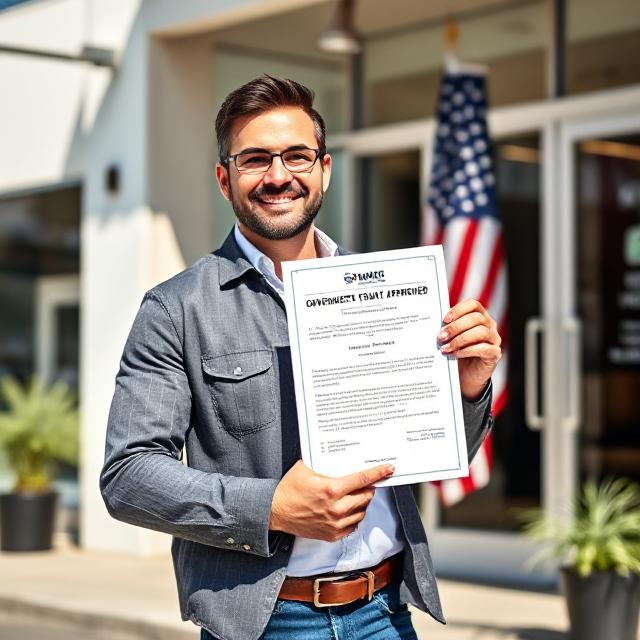
Filing taxes each year can feel stressful—but it doesn’t have to be expensive. In fact, many people across the country qualify to file taxes completely free of charge. That’s right—legally, safely, and securely.
If you’re looking to understand how to file taxes without paying a tax preparer or buying expensive software, this article is for you. We’ll walk you through how free tax USA options work, who qualifies, what tools you can use, and where to get help if needed.
Let’s break down everything you need to know, in simple terms.
Who Can File Taxes for Free USA?
Before diving into the free tools and programs available, it’s important to know whether you qualify.
Several official government-backed programs exist to help individuals file their taxes at no cost. Eligibility for these programs depends on factors like your income level, age, military status, or how complex your tax situation is.
Generally, if your income is $79,000 or less (as of the 2024 tax year), you are eligible for the IRS Free File program. Even if your income is higher, there are still free options for you, such as fillable forms or in-person assistance programs.
1. Use the IRS Free File Program
One of the most trusted and accessible ways to file your taxes for free is through the IRS Free File program. This is a partnership between the IRS and several private tax software providers, which allows eligible taxpayers to file their federal tax return for free using well-known platforms.
Visit the official IRS Free File page here:
https://www.irs.gov/filing/free-file-do-your-federal-taxes-for-free
Eligibility:
- Income of $79,000 or less
- U.S. citizens or legal residents
- Simple or moderate tax situations
What You’ll Need:
- Social Security numbers (for yourself and dependents)
- W-2 forms or 1099 forms from employers or clients
- Previous year’s tax return (optional but helpful)
- Bank account information for direct deposit refunds
Important tip: Start your free filing through the IRS website, not by going directly to the software provider’s homepage. If you go directly, you may be shown paid options instead.
2. Get Help from the VITA Program
The Volunteer Income Tax Assistance (VITA) program is a free service sponsored by the IRS. It provides in-person help to individuals who qualify based on income, disability status, or limited English proficiency.
To locate a VITA site near you, visit:
https://www.irs.gov/individuals/find-a-location-for-free-tax-prep
Who Qualifies for VITA:
- People who earned $64,000 or less
- Individuals with disabilities
- Taxpayers with limited English skills
- Seniors, students, and low-income households
IRS-certified volunteers will help you prepare and e-file your federal tax return free of charge, and many VITA sites can help with your state return too.
3. Seniors: Use the TCE Program
For those aged 60 and older, the IRS also offers the Tax Counseling for the Elderly (TCE) program. This service focuses on tax issues that commonly affect older adults, such as retirement income, pensions, and Social Security benefits.
Learn more here:
https://www.irs.gov/individuals/tax-counseling-for-the-elderly
TCE services are available at many community centers, public libraries, and senior centers. Like VITA, these programs are staffed by trained IRS volunteers.
4. Military Members: Use MilTax
Active-duty service members and certain veterans or their families may qualify to file taxes for free using MilTax, a program offered by Military OneSource and the U.S. Department of Defense.
MilTax offers a secure platform for federal and state returns, and it’s customized for military life—including deployments, combat pay, and multi-state filings.
Start your free tax return here:
https://www.militaryonesource.mil/financial-legal/tax-resource-center/miltax-military-tax-services/
Who Qualifies:
- Active-duty military personnel
- National Guard and Reserve members
- Recently retired service members (within one year)
- Eligible family members
MilTax also offers free support from tax experts who understand the unique challenges of military filing.
5. Use Free Fillable Forms for Tax Free USA
Even if you don’t qualify for the IRS Free File software, you can still file your taxes for free using Free Fillable Forms.
These are digital versions of IRS paper forms that you can fill out and e-file for free. They’re best for experienced taxpayers who don’t need step-by-step help.
Access the forms here:
https://www.irs.gov/e-file-providers/about-the-free-file-program
While these forms are available to anyone regardless of income, they do not offer guidance or do calculations for you—so you need to know what you’re doing.
6. Free Versions of Commercial Tax Software
In addition to government-sponsored options, many popular tax software platforms offer limited free editions. Here’s a quick breakdown:
| Software | Free Federal Return | Free State Return | Limitations |
|---|---|---|---|
| TurboTax Free | Yes | Yes (simple only) | Basic W-2 income only |
| H&R Block Free | Yes | Yes | Simple returns only |
| FreeTaxUSA | Yes | No ($14.99 for state) | More flexible |
| TaxAct Free | Yes | Yes | Income under $79,000 |
Always read the fine print. These providers often restrict free services to taxpayers with simple returns, and they may attempt to upsell you additional features or products.
To stay within the free limits:
- Avoid clicking on premium upgrades
- Don’t opt for add-ons like audit protection or refund advances unless you’re okay with fees
7. Common Mistakes to Avoid for Tax Free USA
Filing your taxes for free can save you money, but only if you avoid a few common errors:
- Using unofficial or scam websites. Stick to official government links like irs.gov.
- Being upsold into a paid plan by software companies.
- Forgetting about free state tax options—many people file their federal return for free but end up paying for state returns unnecessarily.
- Missing out on tax credits such as the Earned Income Tax Credit (EITC) or Child Tax Credit (CTC).
Make sure to double-check that you’ve claimed all credits and deductions you qualify for.
What Documents Do You Need to File for Tax Free USA?
Getting organized before you file makes the process quicker and smoother. You’ll likely need:
- W-2 forms (from employers)
- 1099 forms (for freelance or side gigs)
- 1098-T (tuition or student loans)
- 1098 (mortgage interest)
- Social Security or pension forms
- Last year’s tax return (optional)
- Bank routing and account numbers for direct deposit
Keep all tax forms and receipts in one folder or envelope and double-check that nothing is missing before you file.
What Tax Credits Can You Claim?
Just because you’re filing for free doesn’t mean you miss out on credits and deductions. Some valuable credits include:
- Earned Income Tax Credit (EITC)
https://www.irs.gov/credits-deductions/individuals/earned-income-tax-credit-eitc - Child Tax Credit (CTC)
https://www.irs.gov/credits-deductions/child-tax-credit - Education Credits (such as the American Opportunity Credit and Lifetime Learning Credit)
- Saver’s Credit, if you contribute to a retirement plan
Tax software often includes these automatically, but if you’re filing using forms, review eligibility on the IRS website.
Where to File State Taxes for Free
Most IRS Free File options cover federal returns only. However, some states offer free state filing programs or participate in the IRS partnership.
Here are a few state programs worth checking:
- California: https://www.ftb.ca.gov/file/ways-to-file/efile/index.html
- New York: https://www.tax.ny.gov/pit/efile/default.htm
- Illinois: https://mytax.illinois.gov
- Virginia: https://www.tax.virginia.gov/individual-income-tax-filing
If your state isn’t listed here, search for your state’s Department of Revenue or State Tax Agency for free e-file programs.
Key Tax Filing Deadlines for 2025
Staying aware of deadlines helps you avoid late fees or missed refunds:
- January 31: Deadline for employers to send W-2s and 1099s
- April 15: Deadline to file your taxes or request an extension
- October 15: Deadline to file if you requested an extension
Filing early also helps you receive your refund faster and reduces your chances of identity theft.
Is It Safe to File Taxes Online?
Yes—if you use trusted and secure websites.
Whether you’re using the IRS Free File or MilTax or commercial providers like FreeTaxUSA, your information is encrypted and protected.
To keep yourself safe:
- Make sure the website address starts with “https://”
- Enable two-factor authentication when available
- Avoid filing your taxes on public Wi-Fi or shared computers
Always download a copy of your return for your own records.
Final Thoughts: Filing for Free Is Easier Than You Think
Taxes don’t have to be complicated or expensive. With programs like IRS Free File, VITA, MilTax, and Free Fillable Forms, filing your taxes for free is not only possible—it’s safe, secure, and fast.
Now that you know how to find and use free tax USA options, you can take control of your finances and file confidently. Share this information with others—especially those who may not know they can file for free.
Official Resources
Here’s a quick reference list of helpful government links:
- IRS Free File: https://www.irs.gov/filing/free-file-do-your-federal-taxes-for-free
- VITA Program: https://www.irs.gov/individuals/find-a-location-for-free-tax-prep
- TCE for Seniors: https://www.irs.gov/individuals/tax-counseling-for-the-elderly
- MilTax: https://www.militaryonesource.mil/financial-legal/tax-resource-center/miltax-military-tax-services
- Free Fillable Forms: https://www.irs.gov/e-file-providers/about-the-free-file-program
- EITC Info: https://www.irs.gov/credits-deductions/individuals/earned-income-tax-credit-eitc
- Child Tax Credit: https://www.irs.gov/credits-deductions/child-tax-credit
READ MORE:
- Top Internet Safety Tips You Should Know
- Top Government Grants for Small Businesses in USA
- How to Apply for Section 8 Housing in the USA









1 comment on “How to File Taxes for Free in the USA”